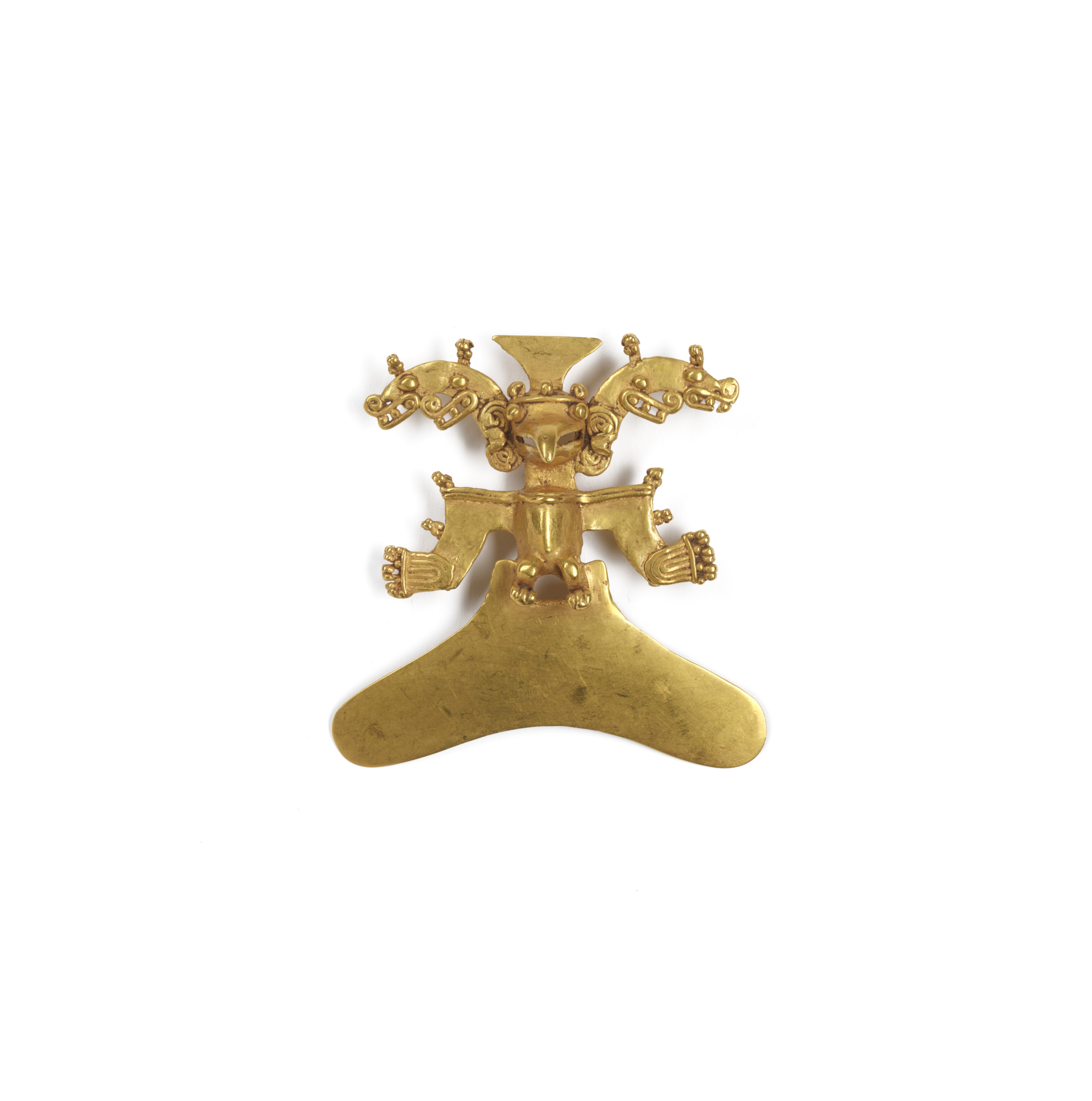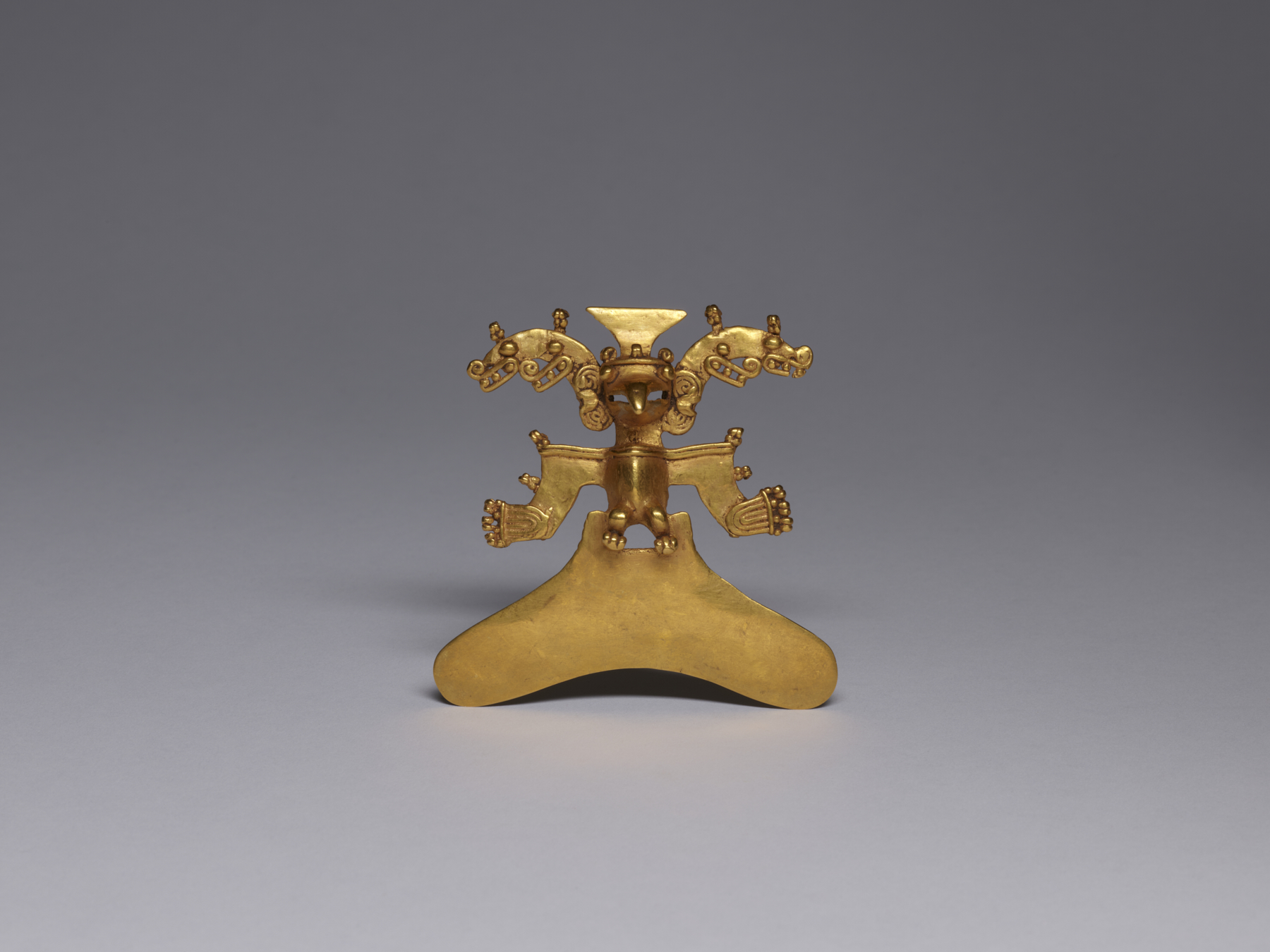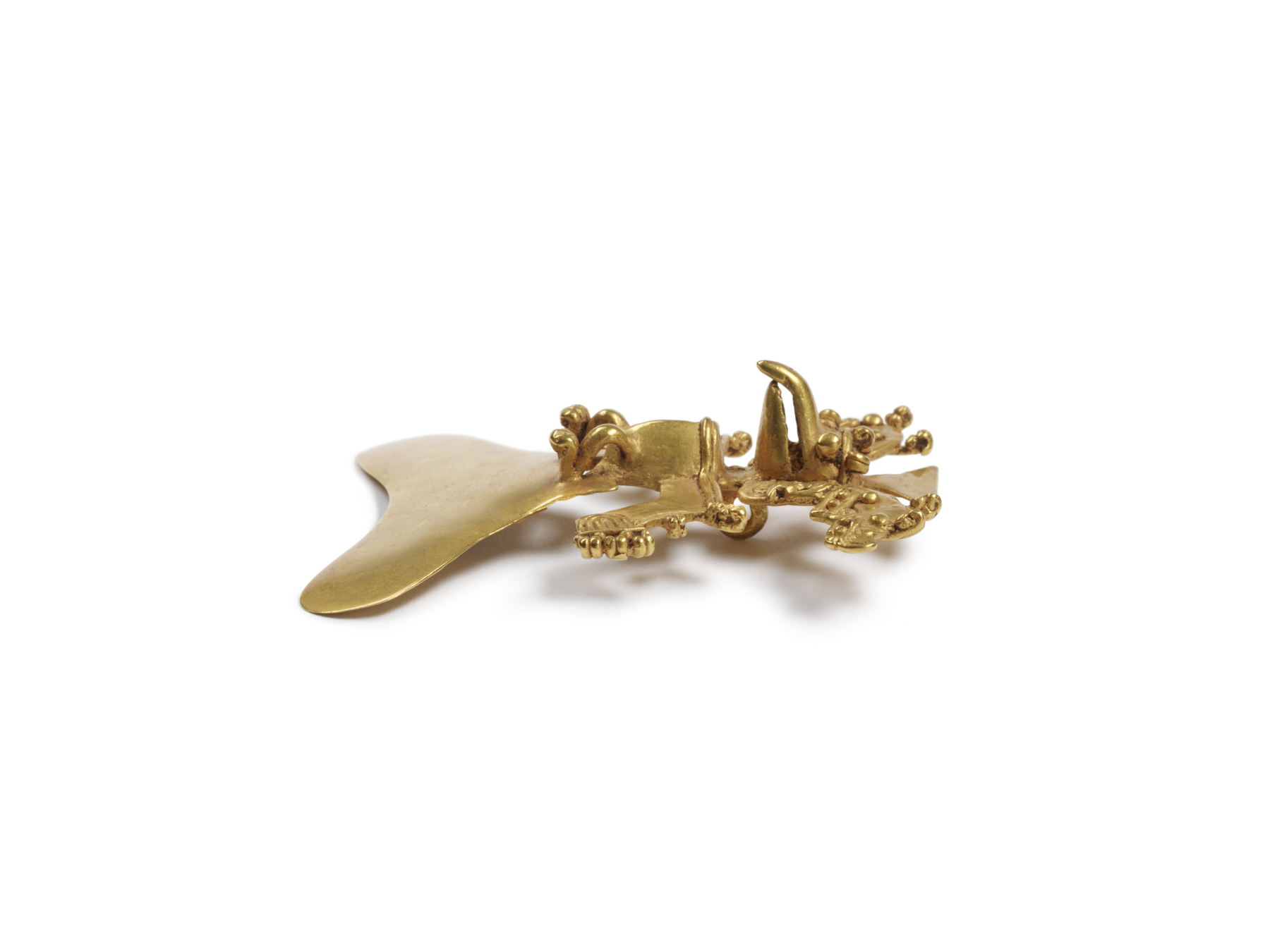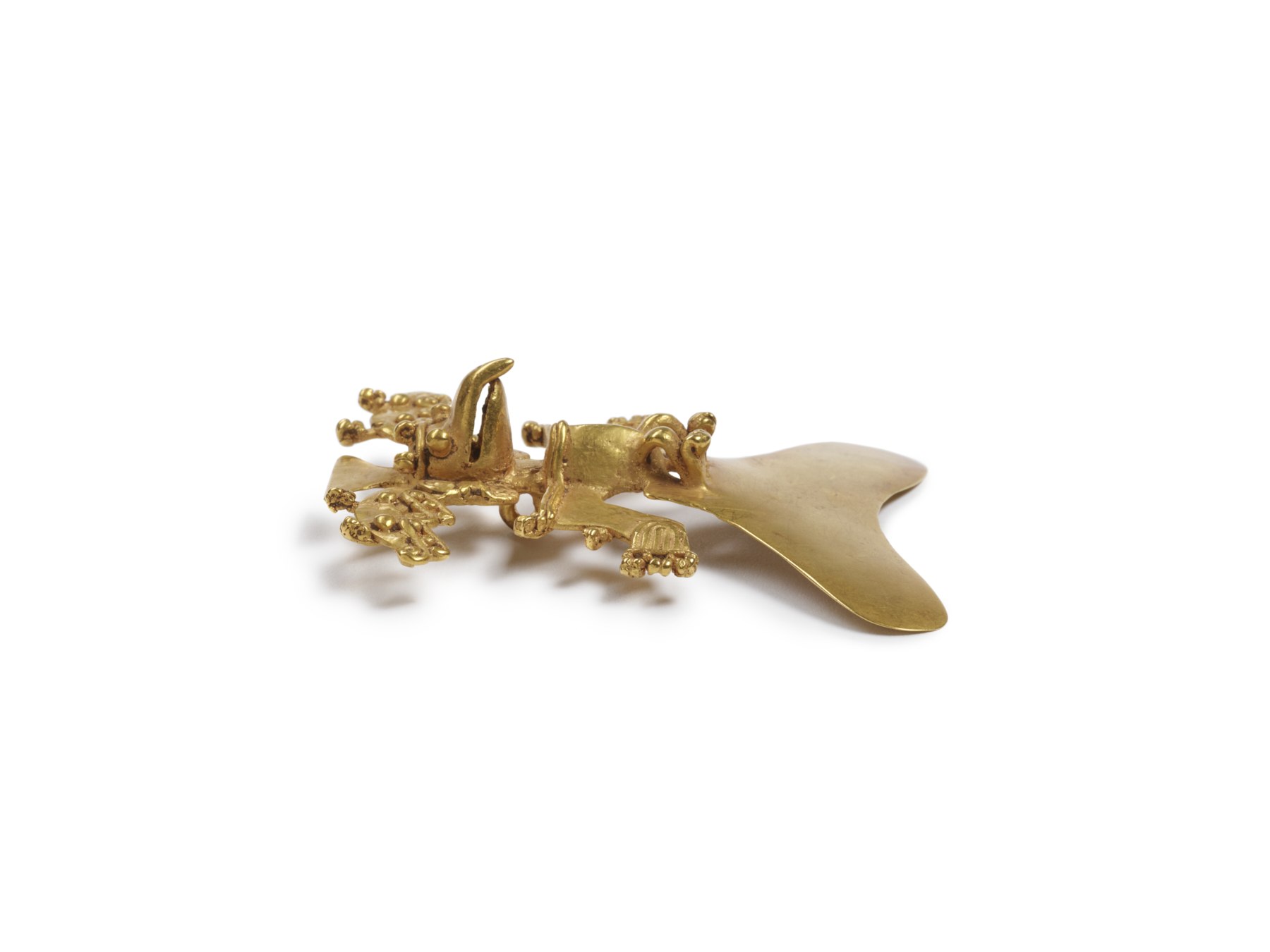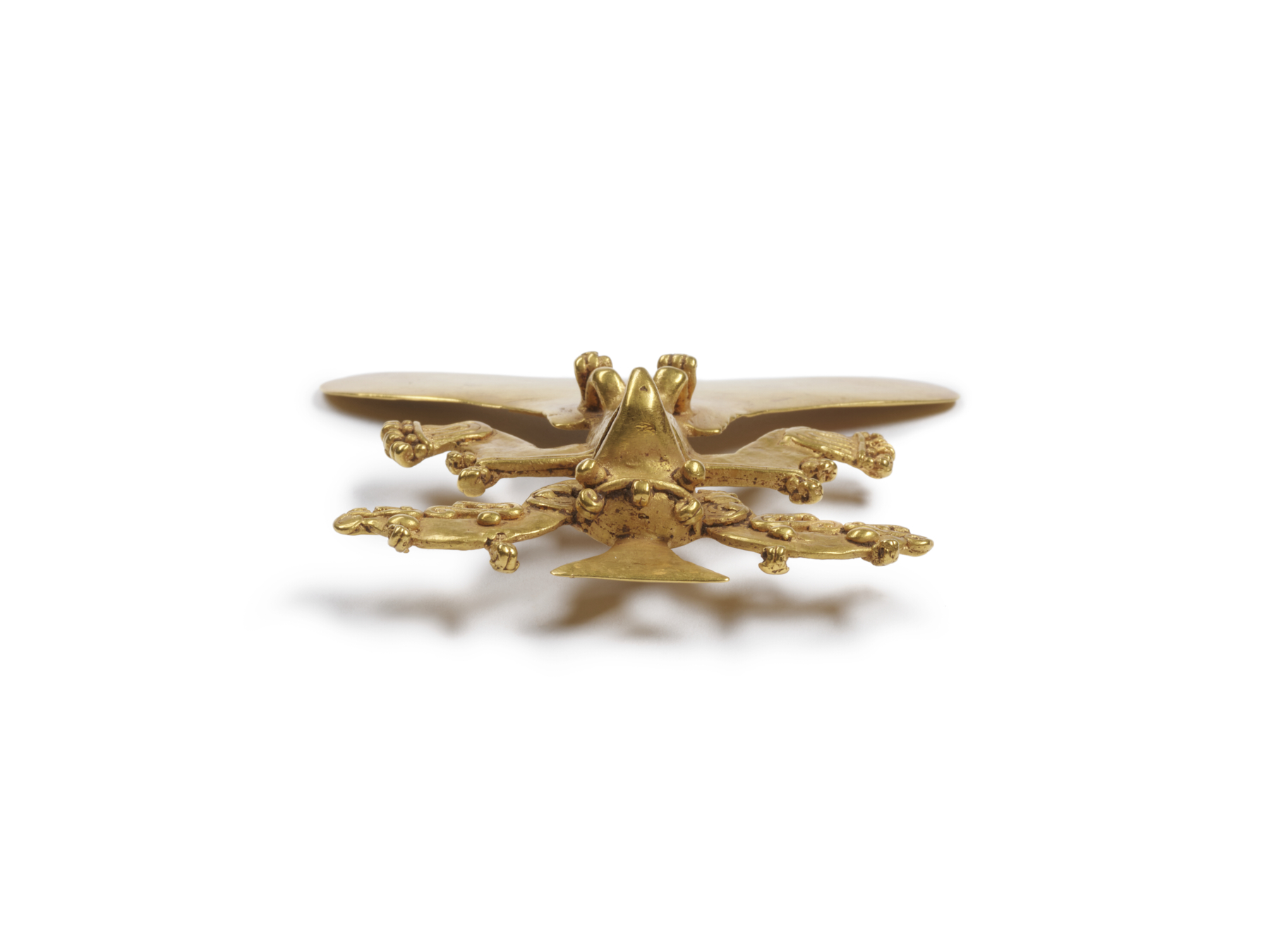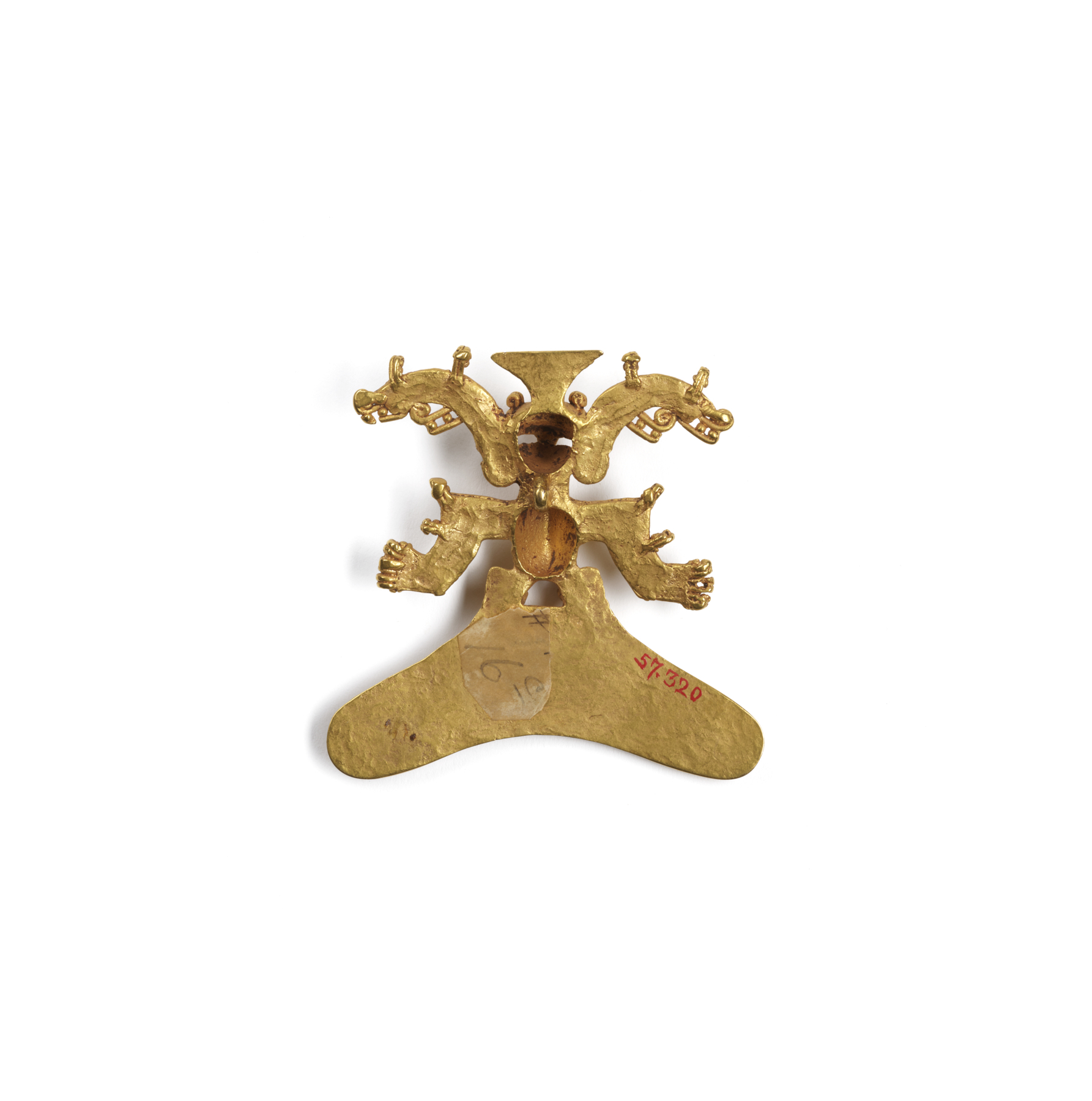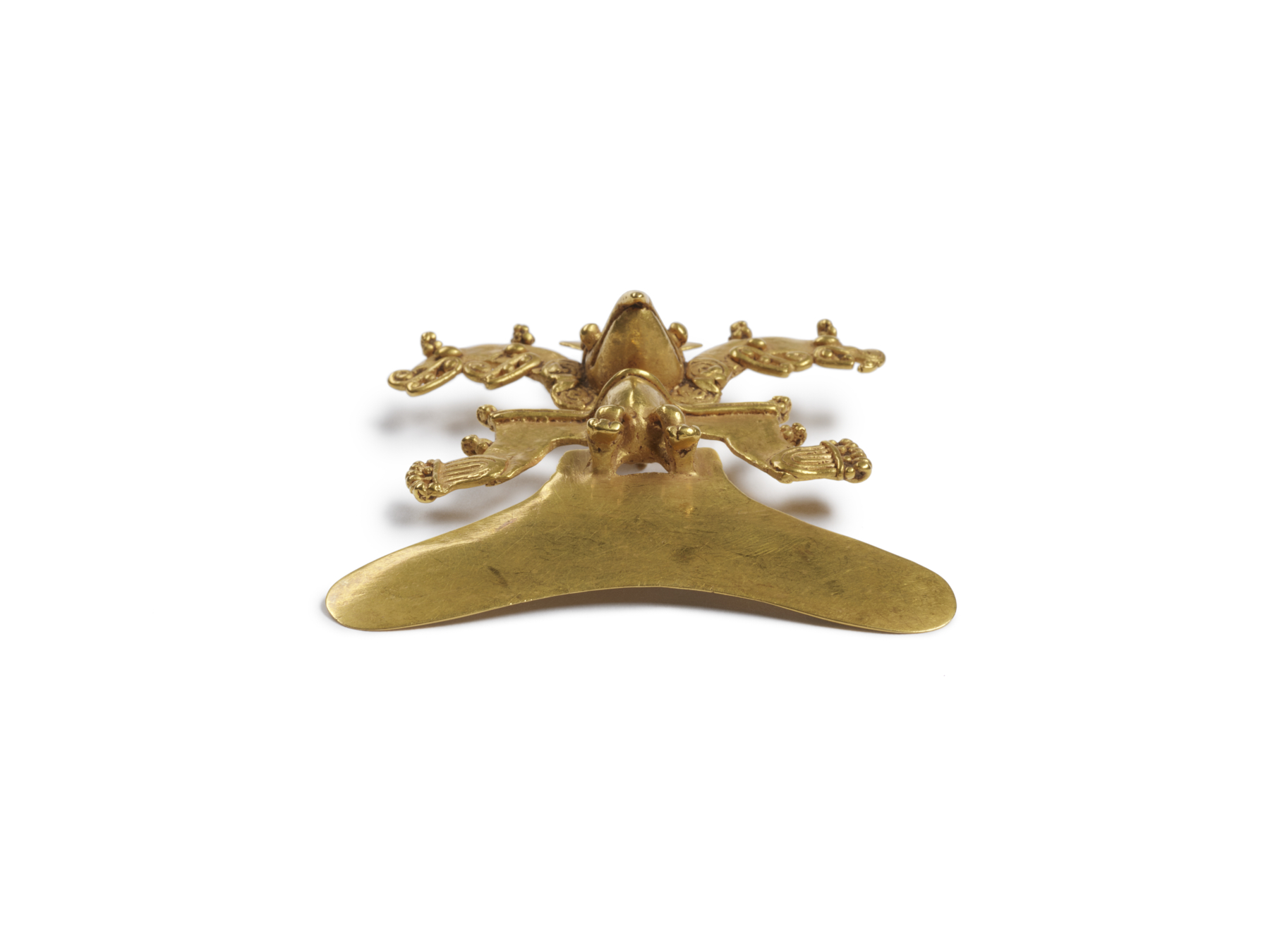Pendant of an Eagle
Pendants were worn by men around the neck on ceremonial occasions. Columbus noted that the inhabitants of Panama who came to greet him wore gold pendants in the shape of eagles. For many Indigenous peoples of Panama and the Isthmian region, the importance of the gold was not in its monetary value, but rather in the fact that it attracted and channeled the sun's rays and power into the body of its wearer.
Provenance
Provenance (from the French provenir, 'to come from/forth') is the chronology of the ownership, custody, or location of a historical object. Learn more about provenance at the Walters.
[Found at a graveyard between Divalá (a village on the outskirts of settled Panama, thirty miles west of David in the province of Chiriqui) and Costa Rica, Spring 1909]; Tiffany & Co. New York, 1910, by purchase [from "Indians," see December 29, 1910 correspondance from Tiffany & Co. to Henry Walters]; Henry Walters, Baltimore, 1911, by purchase; Walters Art Museum, 1931, by bequest.
Geographies
Panama (Veraguas-Gran Chiriquí) (Place of Origin)
Measurements
H: 3 1/8 × W: 3 1/16 × D: 1 1/16 in. (8 × 7.7 × 2.7 cm)
Credit Line
Acquired by Henry Walters, 1911
Location in Museum
Charles Street: Second Floor: Latin American Art / Arte Latinoamericano
Accession Number
In libraries, galleries, museums, and archives, an accession number is a unique identifier assigned to each object in the collection.
In libraries, galleries, museums, and archives, an accession number is a unique identifier assigned to each object in the collection.
57.320

